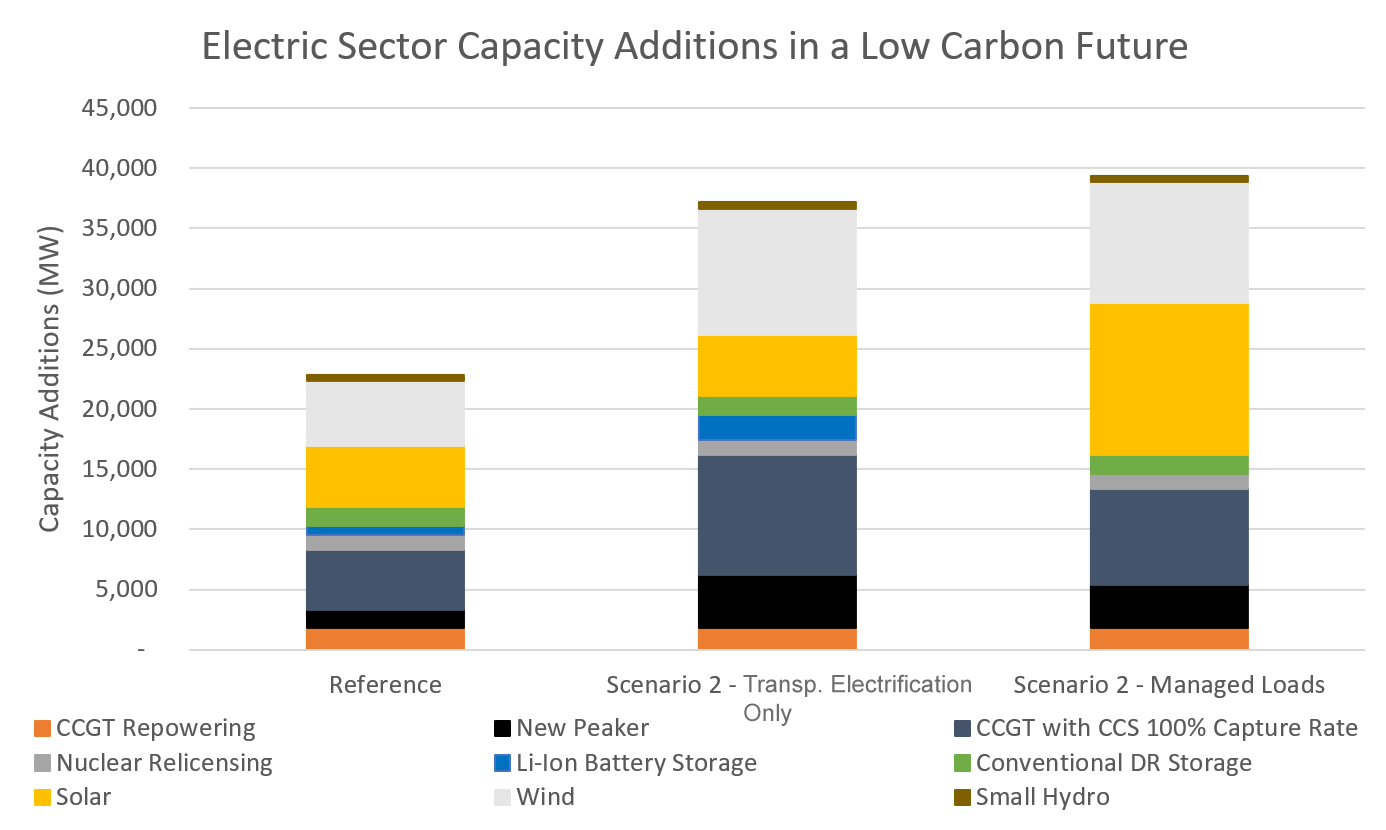About our Transforming Transportation blog series: Part 2 will summarize our research findings on clean energy needs to achieve transportation decarbonization. Click here for more details about this research, including our full white paper and summary report. Part 1 described two pathways for cutting pollution, and Part 3 (upcoming) will outline additional conclusions from this body of work.
The Pacific Northwest is already being hit by climate impacts, ranging from wildfires and smoke to deadly heat waves and destructive floods. The research is clear: to effectively reduce the pollution that causes climate change, we need to electrify basically all the vehicles on the road. We can make this transition less costly—and more beneficial to our health—by reducing reliance on personal vehicles with expanded transit, walking, and biking options. Discussions about the need to electrify so much of our transportation often provoke the question: “How can our grid handle that?” This blog post will answer that exact question.
After modeling what it will take to decarbonize our transportation in Washington and Oregon (see part 1 of this series for more), Climate Solutions worked with long-time utility researchers to analyze how to meet the growing demand for electricity affordably and in a way that complies with Washington’s mandate to achieve a 100% clean electricity grid. We applied this same requirement to Oregon (which at the time did not have a similar law—but now, happily, does!), and the research shows that in both states we can meet increased demand for electricity with 100% clean resources. Managing the time of day that electric vehicles charge and increasing transit options, walking, and biking, will make it even easier and reduce costs for Washingtonians and Oregonians.
Transportation Electrification Only
Here’s what the researchers’ models show us: if we maintain our existing travel patterns but electrify our entire transportation sector, we see a 23% increase in electricity demand by 2050 compared to a business-as-usual scenario. The need for additional electricity is met by a significant amount of renewable energy, as well as clean “dispatchable” resources that can be switched on or off, such as batteries and gas turbines that run on renewable fuels or are equipped with carbon capture and storage (CCS) technology. While this analysis demonstrates that our grid can handle the additional demand needed to electrify our transportation scenario, these investments are about 39% higher than business-as-usual costs. The next few scenarios we review will show ways that we can make this transition even more cost-effective.

Transportation Electrification + Managed Load
Choosing when to charge electric vehicles can save costs and ease the burden on our power grid. In many cases, drivers have significant flexibility about when to charge their vehicles. For example, if an individual gets home from work and plugs their car in around 5pm—a time when energy demand is the highest as people return home and go about household activities—they are charging at a time when the grid is the most constrained. However, energy demand begins to quickly decrease and hits a low at night when people are sleeping. So instead of charging up an EV right upon getting home, drivers can reduce their impact on the grid by charging overnight when energy demand is low. Similarly, energy demand falls after the morning peak, so charging at work around midday has similar benefits.
Our modeling showed that without making any changes to driving patterns, 8% of load could be shifted to different times of day simply by changing charging behavior. This results in fewer resource needs to meet high demand times and cuts system costs by $600 million, compared with the scenario above. We see approximately the same amount of wind power, but more than double the amount of solar thanks to the increased ability to use solar for charging midday, and the need for biogas peakers and CCS combined cycle plants falls by 20%. Though we’re able to meet the electricity needs of fully electrifying our transportation system without changing charging behavior, it’s easier on the grid and much more cost-effective if we charge at smart times.


Transportation Electrification + Reduction in Vehicle Miles Traveled
We can also save money by pairing transportation electrification with driving less, by increasing transit, walking, and biking. In this scenario, we electrify the transportation sector in combination with reducing vehicle miles traveled (VMT) by 27%, making Seattle’s and Portland’s travel patterns look more like London’s, along with VMT reductions in other towns and regions across Washington and Oregon and a corresponding reduction in freight mileage.
Total electricity load in this scenario without changes to charging behavior increases by only 16%, compared to a 23% increase without VMT reduction strategies. To serve this increased electricity demand, the region still makes significant investments in renewable energy and battery storage, but we save $1.8 billion due to a lower impact on the grid.

The cost of electricity climbs from a business-as-usual of 10.2 cents per kWh to 11 cents per kWh. However, due to the fact that owning and operating an electric vehicle is much cheaper than a gas vehicle, and thanks to the reduced need to drive, the average person will save about $4,370 annually in this scenario. In the scenario that does not include reducing vehicle miles traveled, the cost of electricity rises further, to 11.3 cents per kWh. Based on this analysis, it is clear that we see the greatest benefit when we combine electrification with reducing vehicle miles traveled.
We can decarbonize transportation with a 100% clean grid.
The research proves that our power grid can and will meet the increased electricity needs created by switching to electric vehicles—which is absolutely necessary to limit the climate crisis. We can bring enough clean energy resources and battery storage online to meet these needs with a low impact on electricity rates; costs that will be more than outweighed by reducing the expenses of our personal transportation. Managing the time of day we charge and reducing our reliance on personal vehicles will make meeting this electricity demand easier and more cost-effective.
Not only can we decarbonize our transportation sector, but we know how to do so in a way that minimizes grid impacts and amplifies personal benefits. This is why we must implement a range of bold policies including support for rapid transportation electrification, a build-out of more clean electricity, increased transit, reduced vehicle trips, safe infrastructure for walking and biking, improved land use policies that allow more people to live near work and amenities, and an integrated emphasis on improved health, safety, and equity.





